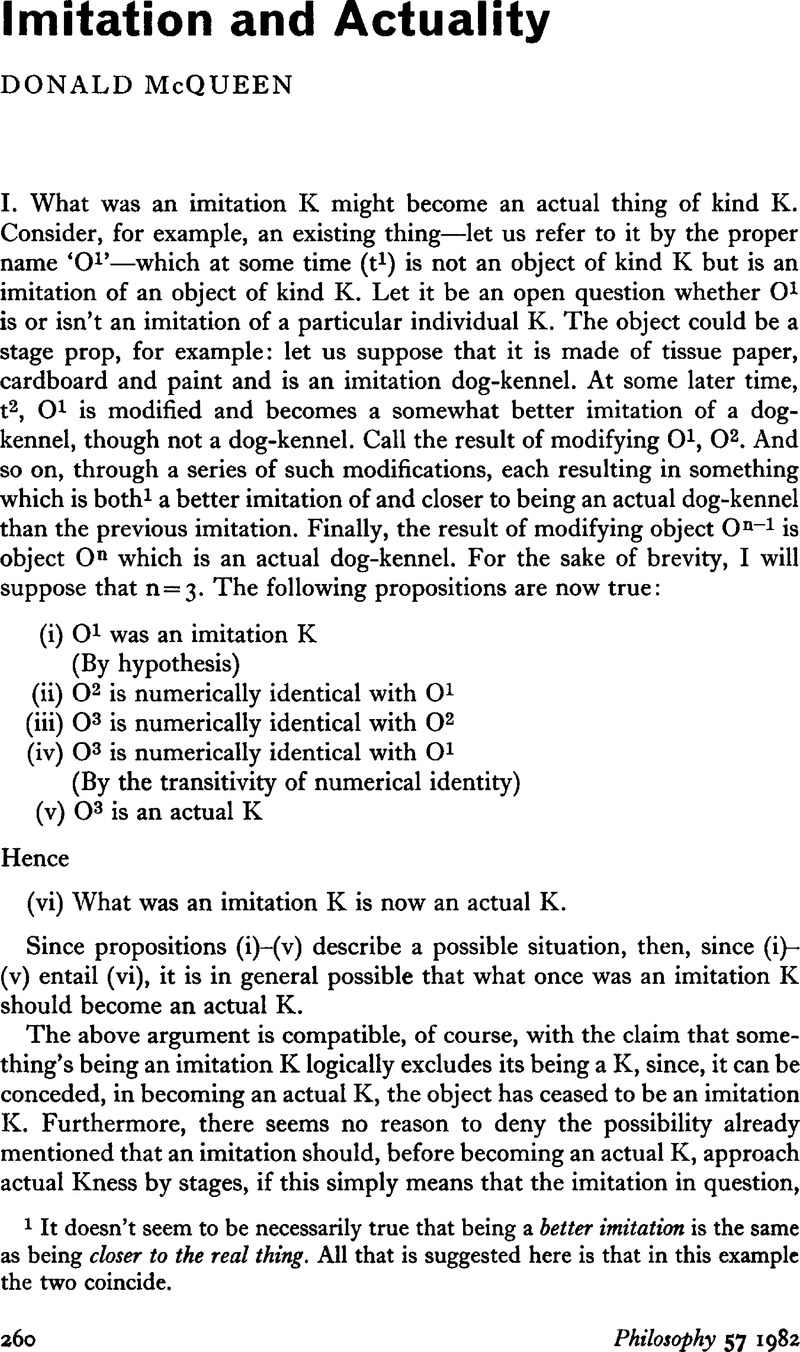No CrossRef data available.
Article contents
Imitation and Actuality
Published online by Cambridge University Press: 30 January 2009
Abstract

Information
- Type
- Discussion
- Information
- Copyright
- Copyright © The Royal Institute of Philosophy 1980
References
1 It doesn't seem to be necessarily true that being a better imitation is the same as being closer to the real thing. All that is suggested here is that in this example the two coincide.
2 Guy Robinson, review of Artificial Intelligence and Natural Man by Margaret A. Boden (Brighton: Harvester Press, 1977) in Philosophy 54, No. 207, 130.
3 Cf. ‘Computing Machinery and Intelligence’ by A. M. Turing, Mind 59, No. 236 (1950), reprinted in Minds and Machines, A. R. Anderson (ed.) (Englewood Cliffs, N. J.: Prentice-Hall, 1964).
4 I owe this example to Jonathan Harrison.
5 In the method employed in such an attempt, for example—Robinson's reference, in the passage quoted above, to the imitation of behavioural characteristics suggests such an argument.

